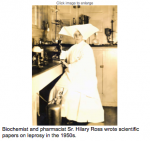 They traveled across the ocean to a new country with an unfamiliar language. Unwelcome in existing institutions, the pioneers built their own charities, immigrant services, schools and hospitals and advocated for political rights and social justice. This may sound like the Jewish immigrant experience, but it also describes Catholic sisters, who arrived in the United States with little but their faith, sense of community, and a willingness to work hard. Cleveland Jewish News
They traveled across the ocean to a new country with an unfamiliar language. Unwelcome in existing institutions, the pioneers built their own charities, immigrant services, schools and hospitals and advocated for political rights and social justice. This may sound like the Jewish immigrant experience, but it also describes Catholic sisters, who arrived in the United States with little but their faith, sense of community, and a willingness to work hard. Cleveland Jewish News
Most recently shown at the Smithsonian Institution in Washington, D.C., the exhibit has no Jewish historical content. But the parallels to the Jewish immigrant experience in America make the saga of Catholic sisters compelling to a Jewish audience, says Maltz Museum executive director Judi Feniger. “People who go through our permanent collection (on the history of Jewish Cleveland) say it’s the same story. And it is.”
Their story is told through first-person accounts, archival photos and historic artifacts in “Women & Spirit: Catholic Sisters in America,” a new exhibit at the Maltz Museum of Jewish Heritage through Aug. 28.
Traveling trunks, a harp, a wicker cradle, and a fluting machine that pleated the nuns’ elaborate caps are among noteworthy artifacts set against informative murals of historic photos and explanatory text.
… In the Civil War, sisters staffed the first Navy hospital ship. A facsimile of an 1865 handwritten note from President Abraham Lincoln to the Sisters of Charity in Kentucky promises protection to their property.
In the late 1800s, nuns set up hospitals for those with leprosy, assisted the homeless in the wake of the 1906 San Francisco earthquake, and tended to the sick during both the 1918 flu epidemic and post-World War II polio outbreak.
Nuns advocated for women’s suffrage, founded a day care center for cannery workers, and more recently, protested for civil rights and peace.
America’s first woman pharmacist was an Ursuline nun. A nun designed an incubator for premature infants in 1930. A collaboration with sisters led to the development of the Mayo Clinic in Minnesota. Such examples of sisters’ innovation and creativity fill the traveling exhibit.
The exhibit offers a peek into a world that many people know nothing about, she adds. “There’s that mystery about life behind the walls.”
While the traveling exhibit focuses exclusively on the history of Catholic nuns in this country, the Maltz Museum created its own local segment, “Women with Spirit,” to emphasize the topic’s interfaith and interreligious aspect.
The women highlighted embody faith, service and determination, Feniger says. “It’s the common glue between the sisters and the Jewish experience: building institutions and building cities.”
The exhibit also examines contributions from Northeast Ohio sisters. An area nun helped found Alcoholics Anonymous in Akron; another rebuilt the Hough neighborhood after the riots of 1966. Sister Dorothy Kazel taught in Cleveland before finding her mission among poor refugees in El Salvador, where she was brutally raped and murdered by the El Salvador National Guard. In Cleveland today, nuns assist the “Lost Boys” of Sudan.
“Women & Spirit: Catholic Sisters in America” is on view through Aug. 28 at the Maltz Museum of Jewish Heritage in Beachwood. 216-593-0575.
Tags: Church, Nuns, pioneers
